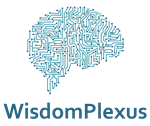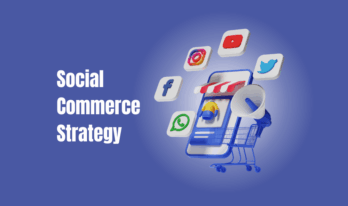Businesses today want to be smarter, faster, and more efficient in today’s fast-paced world. We are all creating and consuming data at a phenomenal rate, from pictures that appear on social media to sensors in a manufacturing plant that watch equipment. That data explosion has made two ambitious tech ideas central to everything: cloud computing and edge computing.
Both the terms are concerned with processing data, but they work in fundamentally different ways. Knowing about the basic difference between edge computing vs cloud computing is not a big technical issue for any company. It is a core strategic choice that will touch everything from your bottom line to your user experience.
What Is Edge Computing & Cloud Computing?
Let’s Strat with what you know. Cloud computing is similar to leasing space in a massive, super-efficient power plant miles from your office. The plant holds all your information, executes your complicated software, and services gigantic number-crunching chores. You tap into all that power via the internet. These companies (Amazon AWS, Microsoft Azure, Google Cloud) own and operate these power plants. The genius is you pay only for the electricity you consume, and you can keep adding more appliances at any time without having to construct your own generator. It is scalable, flexible, and powerful in the extreme.
Think of edge computing like this: rather than sending every little task to a big, faraway computer (like a power plant), edge computing puts a small, smart processor right where it is needed, like in your shop, on your factory floor, or even inside a device. It handles things instantly, right there on the spot. That means less waiting, less internet traffic, and fast results. Tech folks call that delay “latency,” and edge computing helps cut it down big time.
Why Would a Business Need the “Edge”?
Let’s take the example of a self-driving car. If it needs to make a split-second decision to avoid an obstacle, it can’t afford to send a video feed to a cloud server thousands of miles away and wait for a command to come back. That delay could be catastrophic. It must process that information instantly on-board. This requirement of speed and instantaneousness is the reason why companies are looking at edge computing. As per the report, the edge computing market is expected to reach USD 249.06 billion by 2030.
Edge computing vs cloud computing
Let’s understand the edge computing vs cloud computing
| Feature | Cloud Computing | Edge Computing |
| Definition | Cloud computing means getting IT services like storage, software, and processing power over the internet instead of using local computers. | Edge computing puts computers and storage closer to where the data is created, so things can be processed faster and more efficiently.
|
| Core Concept | Centralized processing and storage in large, remote data centers. | Decentralized processing at or near the source of data generation. |
| Location of Processing | Data is transmitted over a network to a distant, centralized cloud server for processing. | Data is processed locally on the device itself or on a nearby edge server. |
| Latency (Delay) | Higher latency due to the physical distance data must travel to and from the data center. | Very low latency, as data is processed immediately and locally, allowing real-time response. |
| Bandwidth Requirements | High bandwidth consumption, as massive amounts of raw data are sent to the cloud. | Drastically reduces bandwidth needs by only sending valuable, processed insights to the cloud. |
| Data Security & Privacy | Data is secured in transit and at rest in the provider’s data center. However, transmitting sensitive data can be a risk. | Keeps sensitive data local, reducing exposure during transmission. Ideal for data sovereignty regulations. |
| Reliability & Dependency | Highly reliant on a stable, high-speed internet connection. Operation halts if the connection is lost. | Can operate independently of a central cloud connection, making it highly reliable in remote or unstable networks. |
| Scalability | Infinitely scalable. Resources (computers, storage) can be added instantly on demand from the vast cloud pool. | Scalability is physical. Requires deploying more edge devices or servers, which can be complex and costly. |
| Cost Model | Operational expenditure (OpEx). Pay-as-you-go model; you only pay for the resources you use. | Higher Initial Capital Expenditure (CapEx) for hardware and setup. Lower ongoing operational data transfer costs. |
| Storage Capacity | Virtually unlimited storage capacity for big data archives and historical analysis. | Limited storage capacity, designed for short-term, immediate data relevant to its local task. |
| Primary Use Cases | Big data analytics, long-term storage, hosting websites & applications, software development, backup & disaster recovery. | Real-time control systems (robotics, autonomous vehicles), IoT sensor analysis, smart cameras, and offline operations. |
| Analogy | A powerful, centralized brain that does deep thinking and stores all memories (for example, a powerful, central brain). | A fast, local nervous system that makes instant reflex decisions (for example, the quick, reactive local nervous system). |
| Best For | Storing vast amounts of data, big data analysis, running complex applications, scalability | Real-time processing, instant decisions, operating in remote/low-connectivity areas. |
Real-World Examples
Consider a big chain store employing intelligent security cameras. If they have an all-cloud computing setup, each hour's worth of video from each camera is uploaded continuously to the cloud to be scanned for theft. This uses enormous amounts of internet bandwidth and costs an absolute fortune in data transfer charges.
Now, picture them using an edge computing architecture. The video is analyzed directly on the camera or a nearby device in the store. It sends only a small alert to the cloud, and to the manager's smartphone, the instant it spots something suspicious, such as someone hiding a product. This conserves bandwidth, saves money, and gives immediate alerts.
Another compelling application is in manufacturing. A factory that uses cloud computing could gather information from sensors on its production line and upload it to the cloud for analysis in order to forecast when a machine is likely to fail. This is useful for planned maintenance. But with edge computing, a sensor directly on the machine itself can analyze vibration and temperature in real-time, detect a fault as it's about to occur, and close down the machine immediately before it fails entirely, avoiding expensive damage and downtime. That's the potency of an instant decision.
So, Which One is Right for Your Business
That is the most crucial question, and the response is virtually never one or the other. It's harmony. Most companies will find an advantage in a hybrid strategy.
You may rely more on the Cloud for:
-
- Housing your customer database and business files.
- Hosting your enterprise applications such as CRM and accounting packages.
- Conducting extensive analysis on historical sales history to identify long-term patterns.
- Hosting your company website and email.
You may rely more on the Edge for:
-
- Any process where a millisecond lag makes a difference (driverless cars, robot surgery).
- Locations with inadequate or spotty internet access (remote farms, cargo ships).
- IoT sensors that produce massive amounts of data but only have to respond to a miniscule subset (smart sensors).
- Use cases where data privacy is critical and processing locally is less vulnerable.
Final Words: Making Your Informed Decision!
The answer is to view your business objectives as sensible issues, rather than as IT issues. Ask your team and yourself: Where do we require instant response? And where do we require extensive, thoughtful evaluation? The results will be your guide.
The cloud is still the undisputed champion of storage, scalability, and large-scale computation. The edge is the new hero for speed, real-time, and efficiency. The winning formula for today's businesses isn't about picking sides. It's about smartly leveraging both, allowing them to work hand in hand like a highly synchronized team to advance your business in the smartest and most efficient manner.
To learn more, visit WisdomPlexus!
FAQs
Q: Edge computing or cloud computing, which is preferable?
Answer: It just depends on what you require. Cloud is best for large tasks and storage, whereas edge is best for quick, local processing, such as real-time decisions on devices.
Q: Is edge computing the next big thing?
Answer: Yes, most experts believe so! With devices becoming smarter and faster, edge computing allows them to operate immediately without waiting for the cloud.
Q: What's better than cloud computing?
Answer: Edge computing can be superior in other situations, particularly when speed and rapid response are crucial. But each has its advantages and usually is best as a combination.
Recommended For You:
Now Is The Time For You To Know The Truth About Cloud Computing & Big Data.




